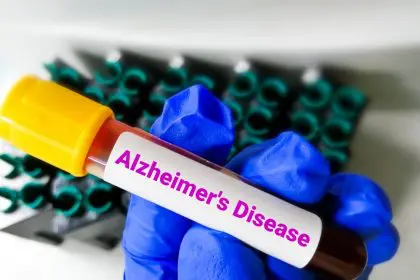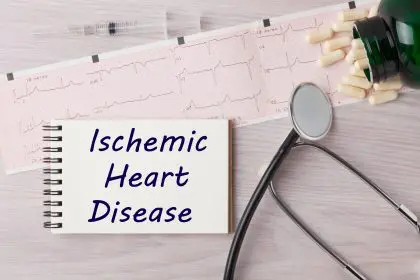We often think about health improvement as a long, arduous journey. Losing weight takes months of discipline. Building fitness requires weeks of consistent workouts. Recovering from illness demands patience and time. But what if some aspects of your health could change in an instant, not through some miracle drug or treatment, but simply by shifting how you think?
This isn’t wishful thinking or pseudoscience. A growing body of research reveals that certain mindset shifts can create immediate, measurable changes in your physical body. From pain perception to immune function, your thoughts influence your biology in ways that science is only beginning to fully comprehend.
The power of this connection lies in the intimate relationship between your brain and every system in your body. Your nervous system doesn’t just passively monitor your physical state. It actively creates your experience of health or illness, often based on expectations, beliefs, and past experiences rather than just objective physical reality. By understanding and leveraging this connection, you can access a powerful tool for health improvement that’s always available to you, completely free, and remarkably effective.
How your thoughts create your physical reality
Your brain doesn’t just observe what’s happening in your body. It actively predicts and interprets physical sensations based on past experiences, current context, and expectations. This predictive process shapes your actual experience of physical sensations, sometimes more powerfully than the sensations themselves.
Pain offers a clear example of this mind-body connection. Your experience of pain depends only partly on actual tissue damage or nerve signals. Your brain’s interpretation of these signals, influenced by factors like attention, expectation, and emotional state, plays an equally important role. This explains why identical physical injuries can feel drastically different depending on context. A soccer player might barely notice a substantial leg injury during the excitement of a championship game, while the same injury would cause intense pain in other circumstances.
Your immune system responds strongly to your thoughts and beliefs. Studies of the placebo effect consistently demonstrate that when people believe they’re receiving effective treatment, their bodies often respond accordingly, producing real physiological changes. This isn’t imagination. Documented changes in immune cell activity, inflammatory markers, and even gene expression can follow placebo treatments that participants believed were active medicine.
Stress perception demonstrates another powerful mind-body pathway. When you perceive something as threatening or overwhelming, your body launches a complex stress response involving hormones like cortisol and adrenaline. These hormones trigger physical changes from increased heart rate to suppressed immune function. Yet the same exact situation can trigger either a harmful stress response or an energizing challenge response, depending largely on how you think about it.
Your nervous system connects to every organ in your body through complex pathways including the vagus nerve, which influences everything from heart rate to digestion to immune function. Through these connections, your thoughts and emotions can either trigger inflammation and dysfunction or promote healing and optimal function, often within seconds of a thought or emotional shift.
The expectation effect that transforms health outcomes
Perhaps the most immediate health-changing mindset shift involves your expectations. What you expect to experience powerfully shapes what you actually experience, often through unconscious pathways that directly affect your physiology.
One fascinating study demonstrated this principle dramatically. Elderly men lived in an environment meticulously recreated to resemble decades earlier. After just one week of being treated as if they were many years younger, the men showed remarkable improvements in physical strength, manual dexterity, posture, cognition, and even vision. Their bodies responded to the expectation that they were younger, creating measurable physical changes in just days.
Similar expectation effects appear in pain research. When participants in pain studies are told that a treatment will increase their pain, they typically experience more pain, even if the treatment is just a saline solution. Conversely, positive expectations can reduce pain just as effectively as actual pain medications. Some studies show that clearly labeled placebos still reduce pain significantly when people are told the placebo effect is a powerful mind-body healing response.
Athletic performance demonstrates this principle in action. When runners believe they’re running in ideal temperature conditions, they perform better than those who are told the temperature is too hot or cold for optimal performance, even when the actual temperature is identical. Their expectations literally change how efficiently their bodies function.
Even aging, which we typically consider an inevitable biological process, shows remarkable responsiveness to expectations. People exposed to positive age stereotypes showed better physical function, cardiovascular responses, and recovery from disability than those exposed to negative age stereotypes. Their expectations about aging changed how their bodies actually aged.
To leverage this expectation effect, start actively noticing your health expectations. When you feel a headache beginning, do you immediately think “This is going to be awful” or “I always get terrible headaches”? When you catch a cold, do you automatically assume you’ll be sick for weeks? These negative expectations may actually be programming your body for worse outcomes. Instead, try consciously setting positive expectations. This isn’t about denial or ignoring real symptoms, but about creating the optimal conditions for your body’s natural healing responses.
The meaning shift that transforms stress
How you interpret stress might be the single most powerful mindset shift for instant health improvement. Traditional views suggest all stress is harmful, but groundbreaking research reveals that stress only damages health when you believe it’s harmful.
In a remarkable study tracking 30,000 adults over eight years, people who experienced high stress had a 43% increased risk of dying, but only if they believed stress was harmful to their health. Those who experienced high stress but didn’t view it as harmful showed no increased risk of death. In fact, they had the lowest death rates in the study, even compared to people with minimal stress.
This mind-blowing finding suggests your beliefs about stress, not stress itself, determine its impact on your health. When you view stress responses like a pounding heart or faster breathing as your body helping you rise to a challenge, rather than signs of damage or weakness, your physical stress response changes. Your blood vessels stay relaxed rather than constricting, mirroring the cardiovascular profile of joy and courage rather than fear and anxiety.
The beauty of this mindset shift is its immediacy. You can transform your physiological response to stress in this moment simply by changing how you think about it. The next time you notice stress symptoms, try thinking, “This is my body helping me rise to this challenge. My pounding heart is preparing me for action. My faster breathing is getting more oxygen to my brain.” This small cognitive shift creates an entirely different hormonal cascade and cardiovascular response.
Beyond the immediate physical benefits, viewing stress as helpful rather than harmful makes you more likely to deal with challenges in healthy ways. People with a positive stress mindset are more likely to seek feedback and support during stressful times and find meaning in difficult experiences, creating upward spirals of wellbeing rather than downward spirals of avoidance and distress.
The belonging shift that boosts immune function
Humans are fundamentally social creatures, with social connection needs hardwired into our nervous systems. Recent discoveries reveal that feeling socially connected or disconnected directly affects immune function, inflammation levels, and even gene expression, often within minutes of a social experience.
Studies show that perceived social isolation triggers what scientists call a “conserved transcriptional response to adversity”—essentially, your genes switch to a defensive program that increases inflammation and reduces virus-fighting capacity. Conversely, feelings of connection and belonging shift gene expression toward patterns that support healing and health.
The key insight from this research is that your subjective sense of connection matters more than objective measures like how many people you interact with. This means you can trigger health-promoting biological changes simply by shifting your awareness toward experiences of connection rather than isolation.
One powerful technique involves consciously recognizing moments of connection and belonging throughout your day. Did someone smile at you? Did you hold the door for a stranger who thanked you? Did you enjoy a text exchange with a friend? Rather than dismissing these as trivial interactions, try intentionally savoring them as evidence of your connectedness to others.
Another approach involves creating micro-moments of connection in everyday activities. Make genuine eye contact with the cashier at the grocery store. Really listen to a coworker’s weekend story. Send a quick message telling someone you’re thinking of them. These small actions create neurobiological states that reduce inflammation and enhance immune function through the relaxation of your sympathetic nervous system.
Perhaps most powerfully, helping others creates immediate physiological benefits for the helper. When you perform acts of kindness, your body releases oxytocin, which reduces inflammation and supports heart health. Your brain’s reward centers activate, releasing dopamine and endorphins that reduce pain and increase wellbeing. Simply shifting your focus from your own needs to supporting others can create instant physiological health benefits.
The present-moment shift that calms your nervous system
Modern life keeps many of us locked in a state of continuous partial attention, constantly toggling between tasks, devices, and thoughts. This scattered attention creates a low-grade stress response that, over time, contributes to inflammation, digestive issues, and immune dysfunction.
The antidote lies in present-moment awareness, often called mindfulness. Shifting your attention fully to the present moment triggers an immediate relaxation response, reducing stress hormones, lowering blood pressure, and improving heart rate variability within minutes.
This mindset shift works by interrupting the narrative thinking that often drives stress and anxiety. When you’re fully present, you’re not ruminating about past mistakes or worrying about future problems. You’re simply experiencing what is, which typically requires far less physiological mobilization than combating imagined scenarios.
The beauty of this shift is its accessibility. Right now, you can take three conscious breaths, feeling the sensations of air entering and leaving your body. You can notice five things you see, four things you feel, three things you hear, two things you smell, and one thing you taste. These simple practices interrupt stress spirals and return your nervous system to a state of balanced regulation.
Even brief mindfulness practices can create measurable biological changes. Just eight minutes of mindful breathing can reduce inflammatory markers in the blood. A brief body scan meditation can improve both attention and cardiovascular function. These immediate physiological benefits build over time, potentially reshaping your baseline health status with regular practice.
Putting mindset shifts into daily practice
While these mindset shifts can create instant physiological changes, integrating them into your life requires intention and practice. Here are practical ways to make these powerful shifts part of your daily experience.
Start your day by setting positive health expectations. Rather than immediately checking your phone or rushing into activity, take a moment to imagine your body functioning optimally throughout the day. Feel energy flowing freely, your immune system working efficiently, and your mind remaining clear and focused. This brief visualization sets a neurological template that your body tends to follow.
Create mindset triggers in your environment. Place small reminders in locations you see regularly. A sticky note on your computer might say “Stress is helping me rise to challenges.” A phone background might read “Notice connection.” These visual cues help interrupt automatic negative thinking patterns and prompt healthier mindset choices.
Practice reframing physical sensations. When you notice uncomfortable body sensations, try shifting your interpretation. Heart racing before a presentation? “My body is giving me energy to perform at my best.” Muscle soreness after exercise? “These are sensations of my body getting stronger.” Stomach tension during a difficult conversation? “My body is alert and helping me navigate this situation skillfully.”
Build brief mindfulness practices into transition moments in your day. Before starting your car, take three conscious breaths. While waiting for your computer to boot up, feel your feet on the floor and notice sounds around you. As you wash your hands, feel the sensations of water and soap. These micro-practices interrupt stress momentum and reset your nervous system multiple times daily.
Actively collect evidence that supports healthy mindsets. Our brains have a negativity bias that makes threatening information more salient. Counteract this by deliberately noticing experiences that reinforce positive health beliefs. Did you recover more quickly than expected from an illness? Did changing your perspective on a situation reduce your anxiety? Keep a simple record of these experiences as evidence of your mind-body connection in action.
The most powerful aspect of mindset-based health improvement is that it’s always available to you. Unlike treatments that require appointments, prescriptions, or special equipment, you can shift your mindset anytime, anywhere. This accessible, cost-free approach complements other health practices, potentially making everything from medications to exercise more effective by optimizing your body’s receptivity to these interventions.
By understanding and harnessing the profound connection between your thoughts and your physical health, you gain access to an inner pharmacy of sorts, capable of producing genuine biological responses that support healing and wellbeing. The next time you’re seeking health improvement, remember that one of your most powerful tools might be the mindset shift that transforms how your body functions in this very moment.
















